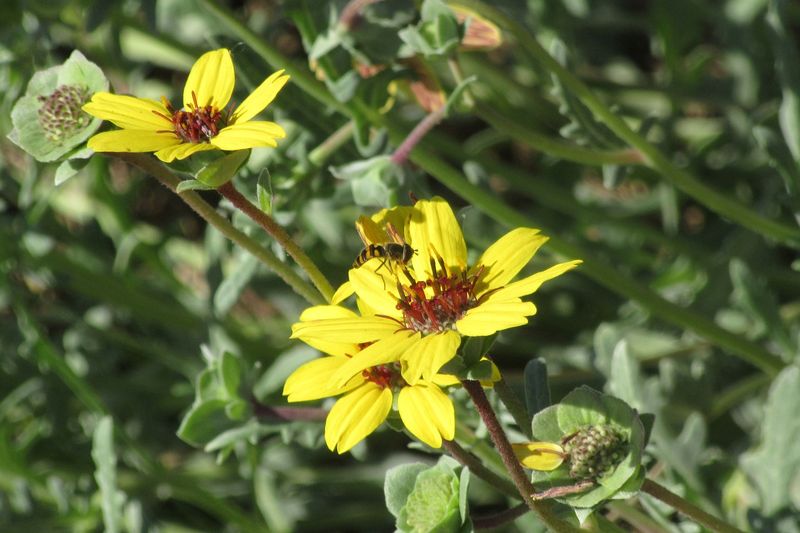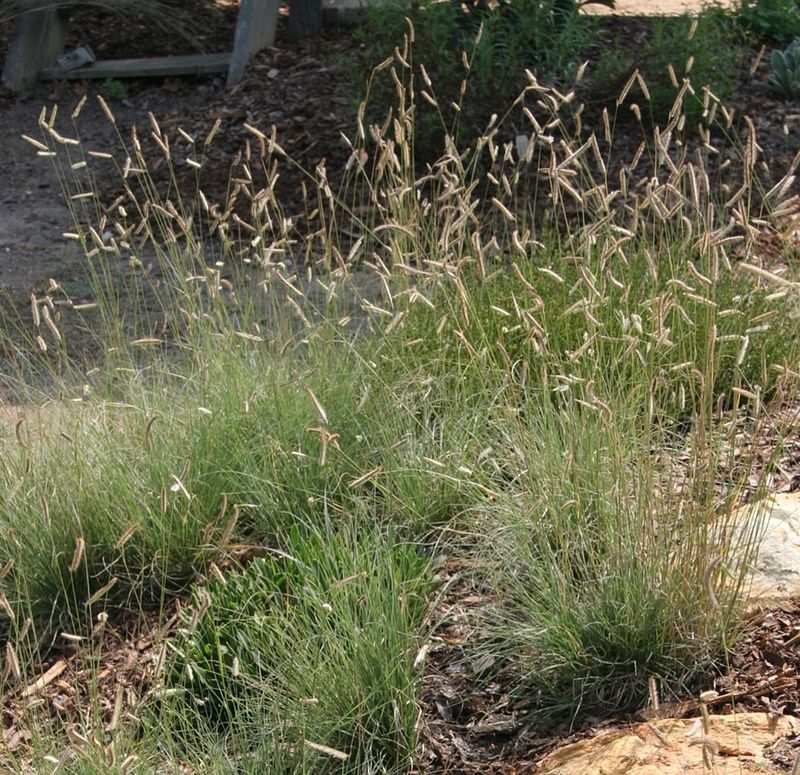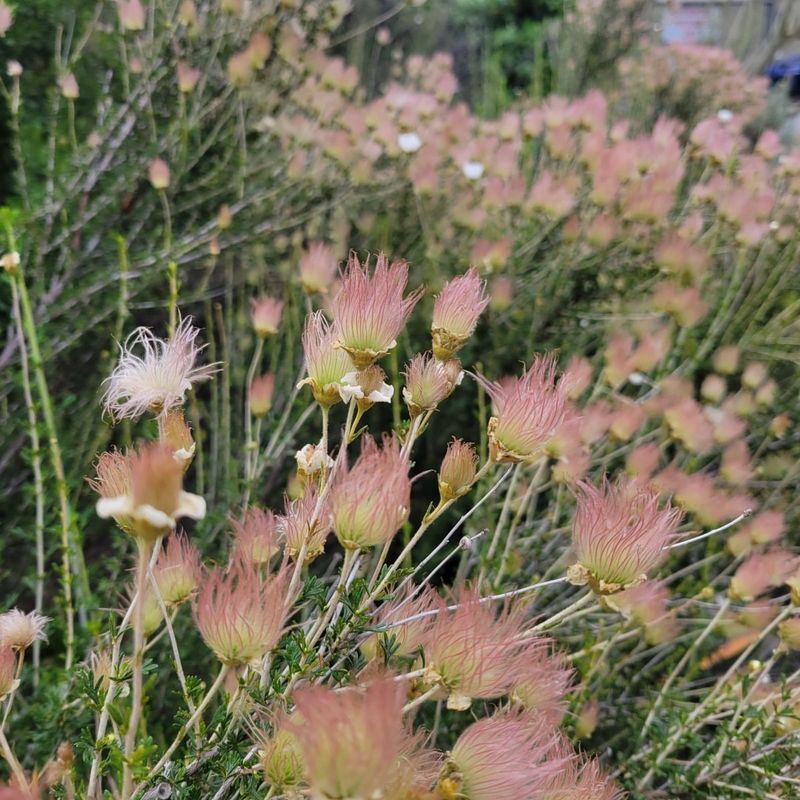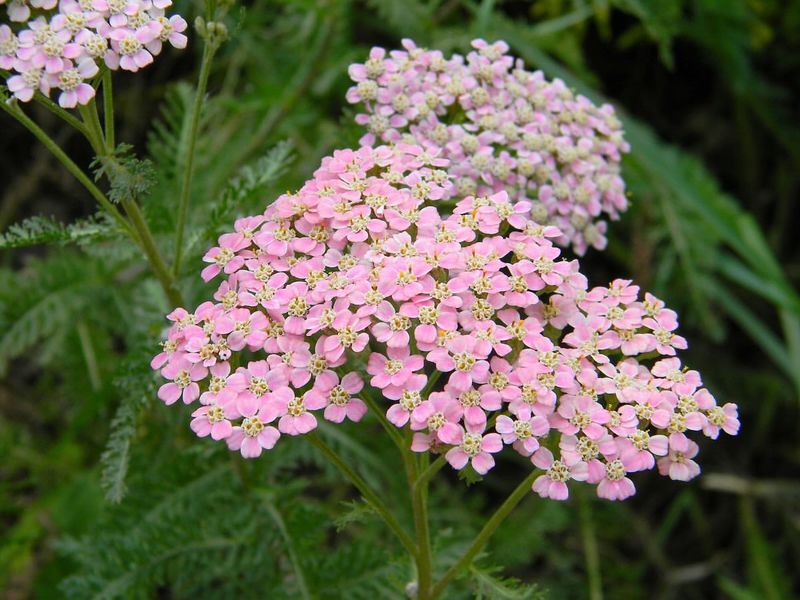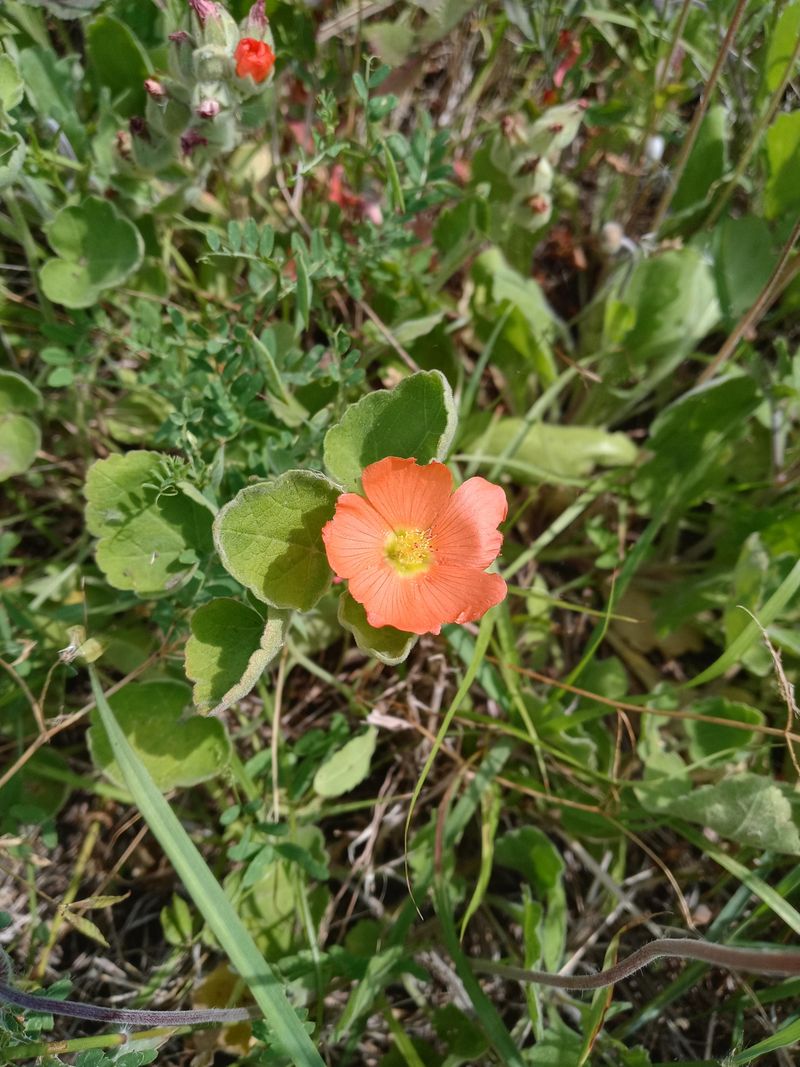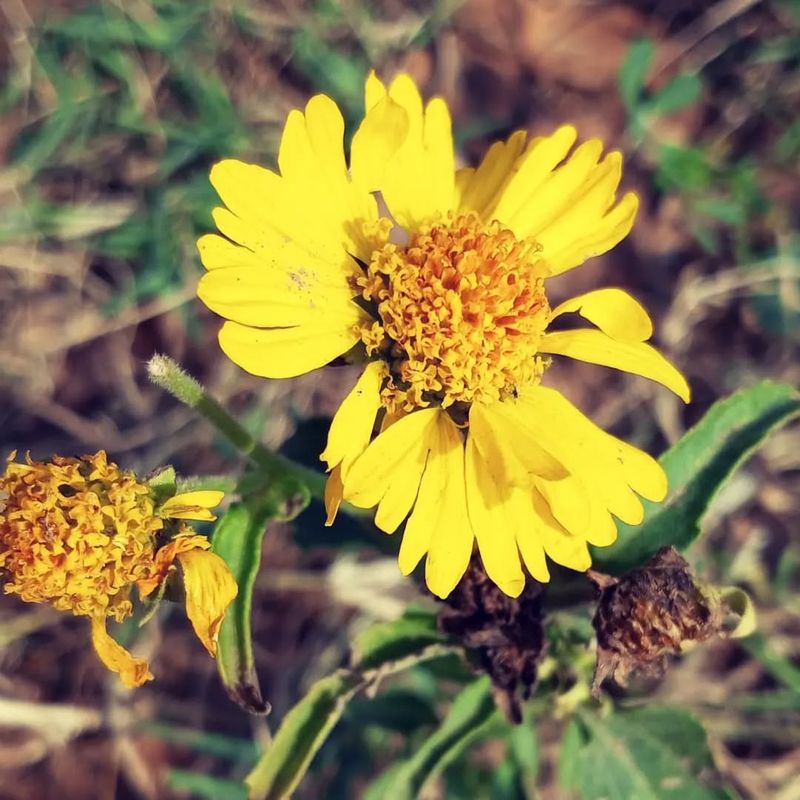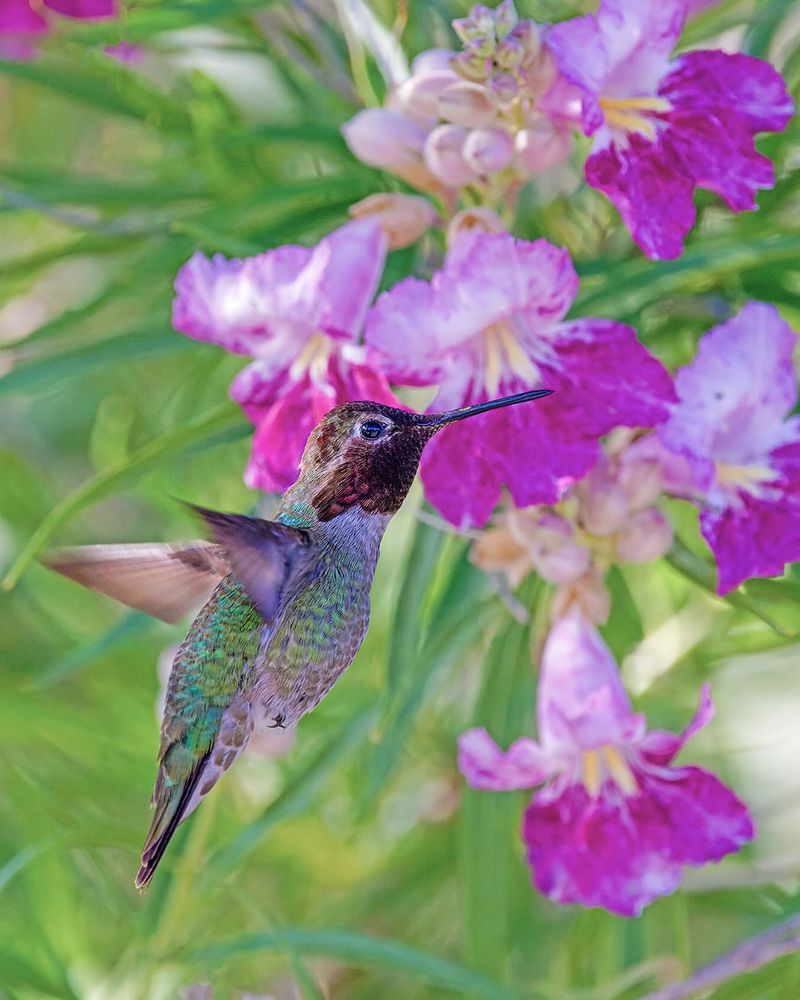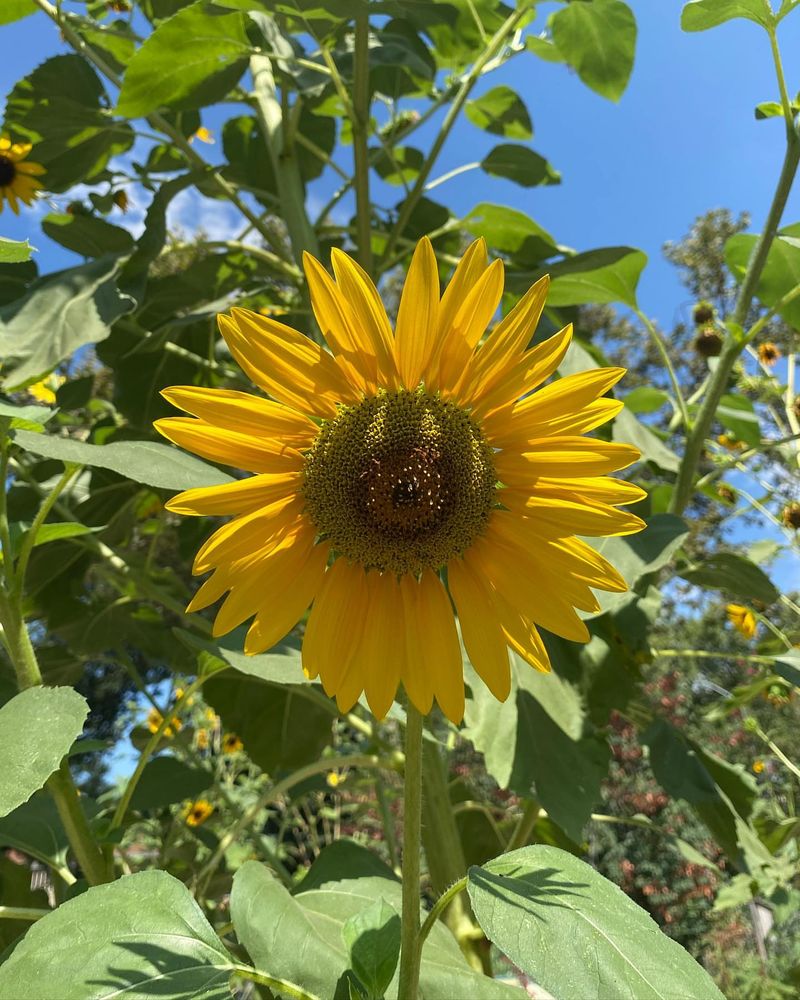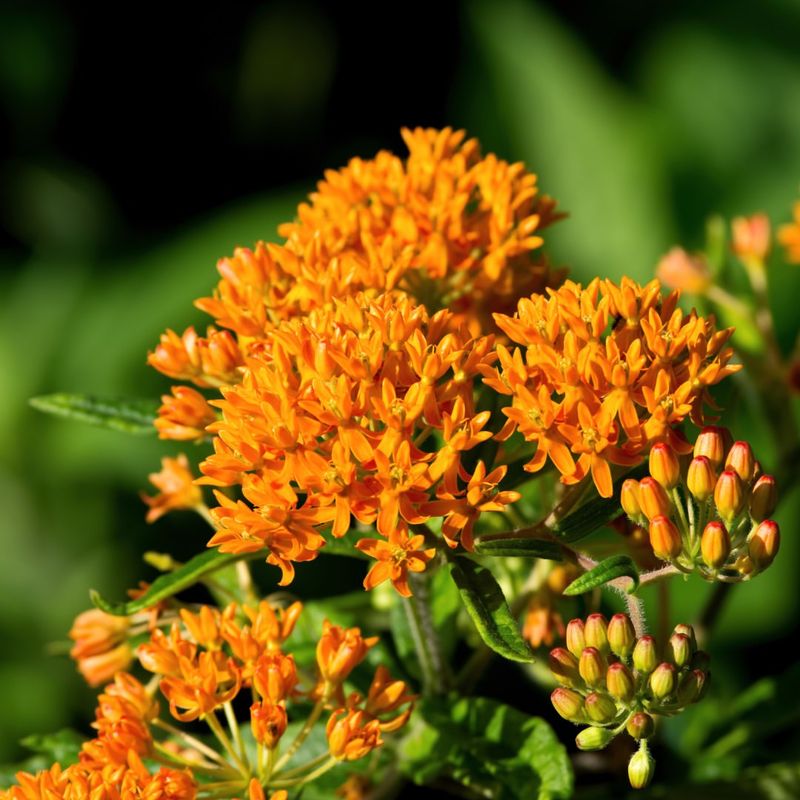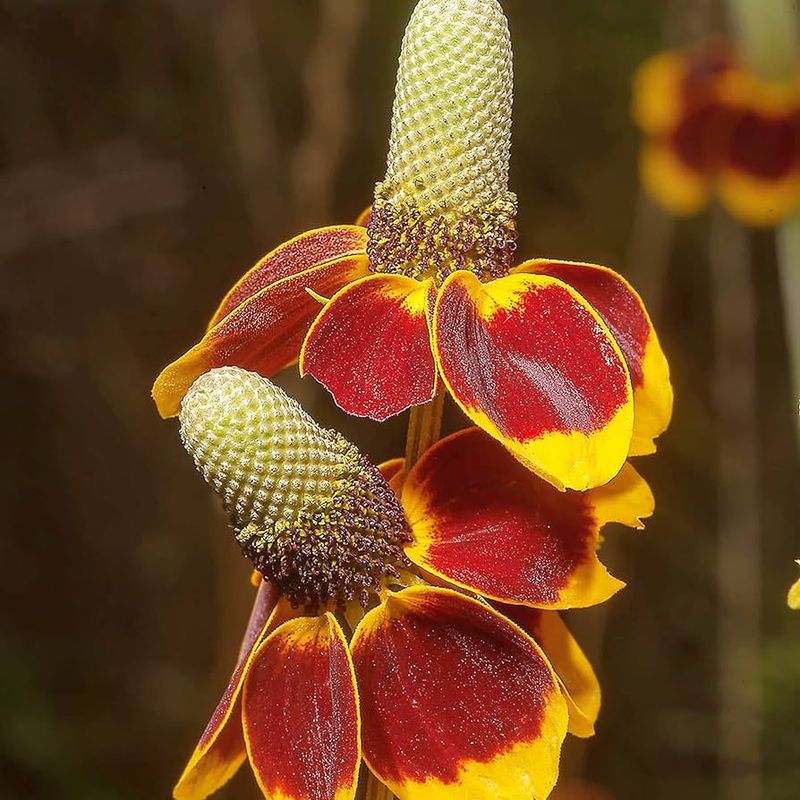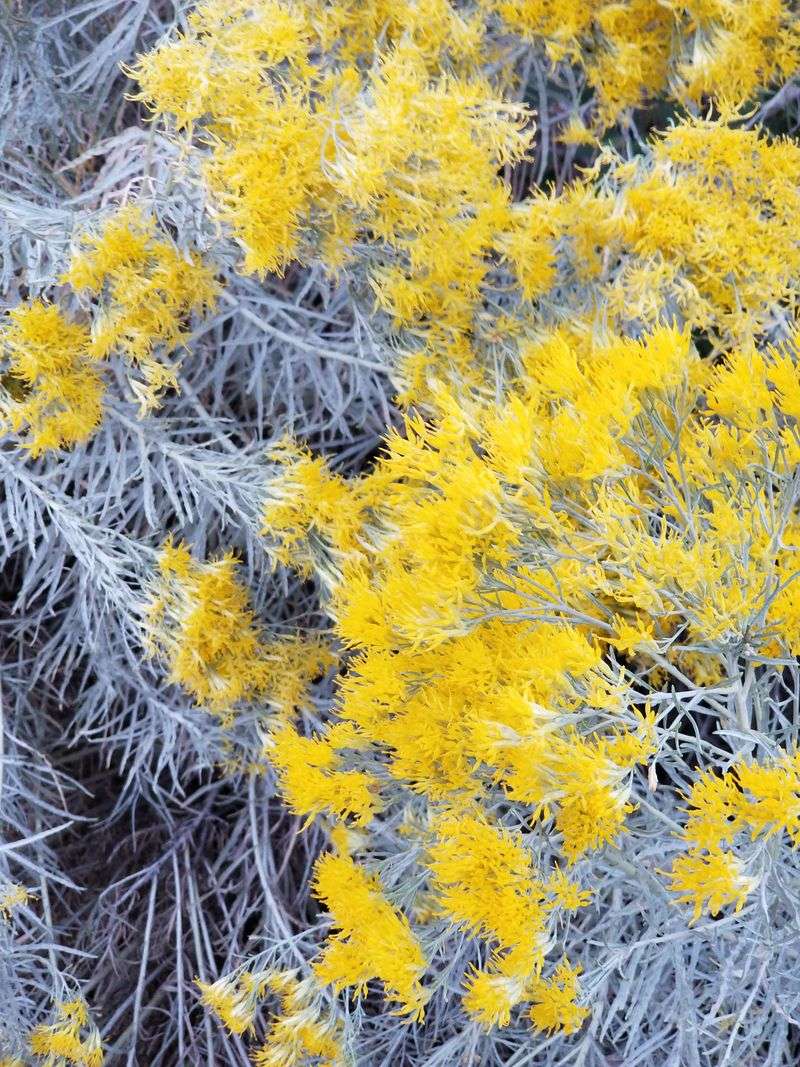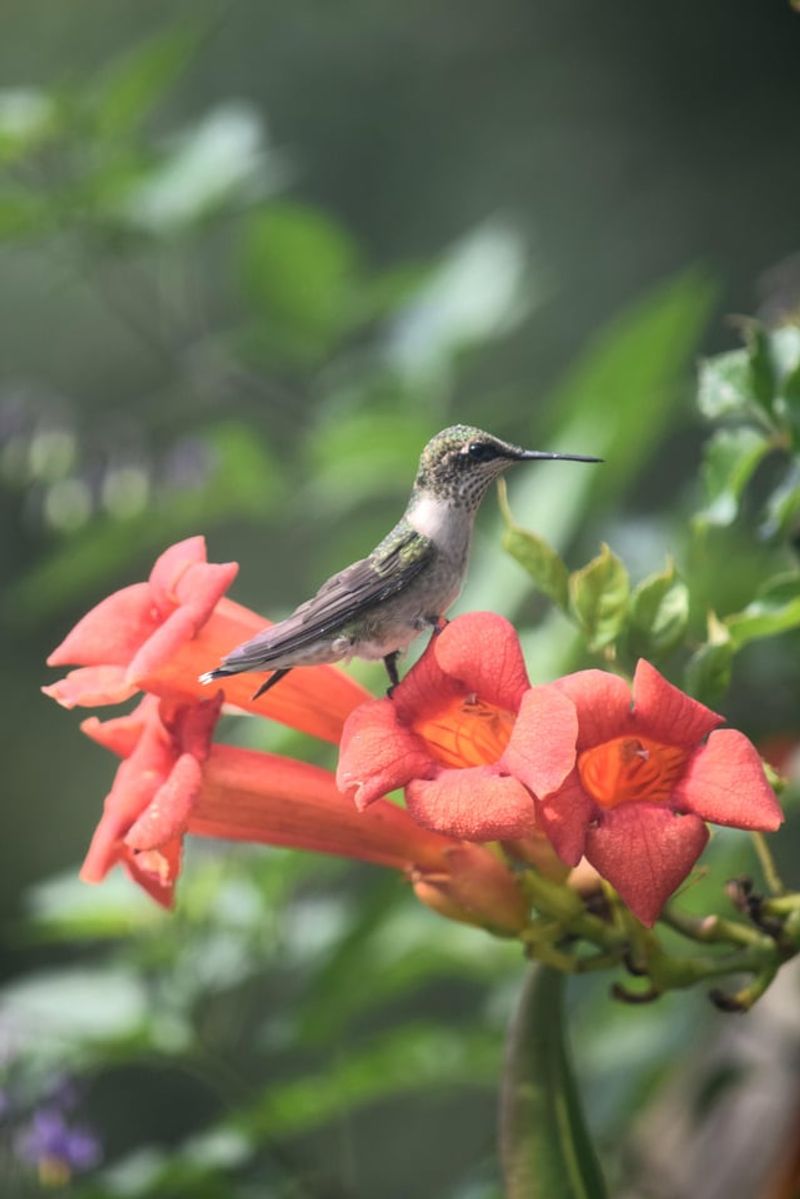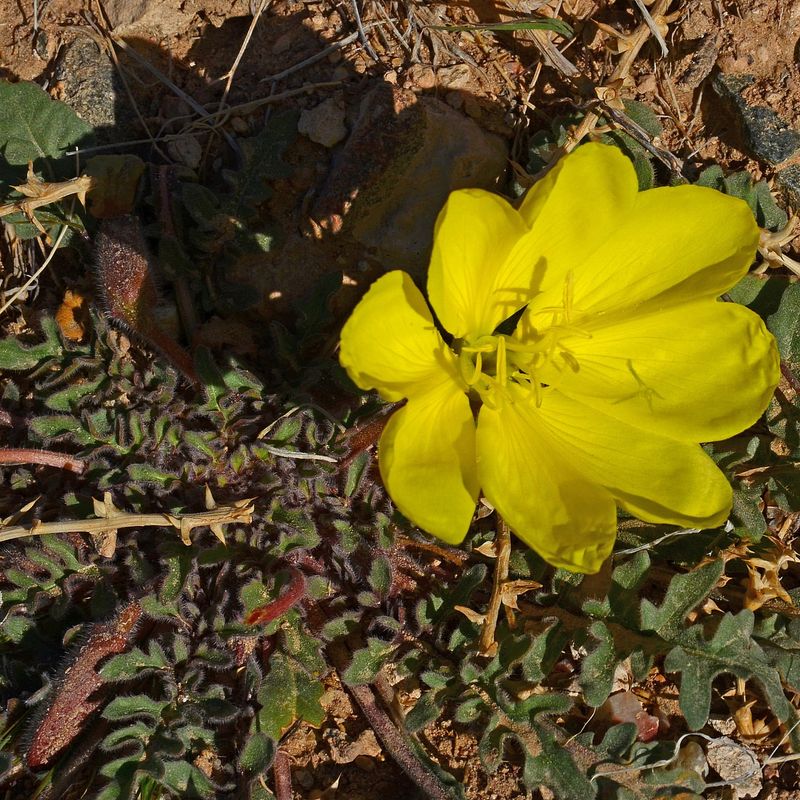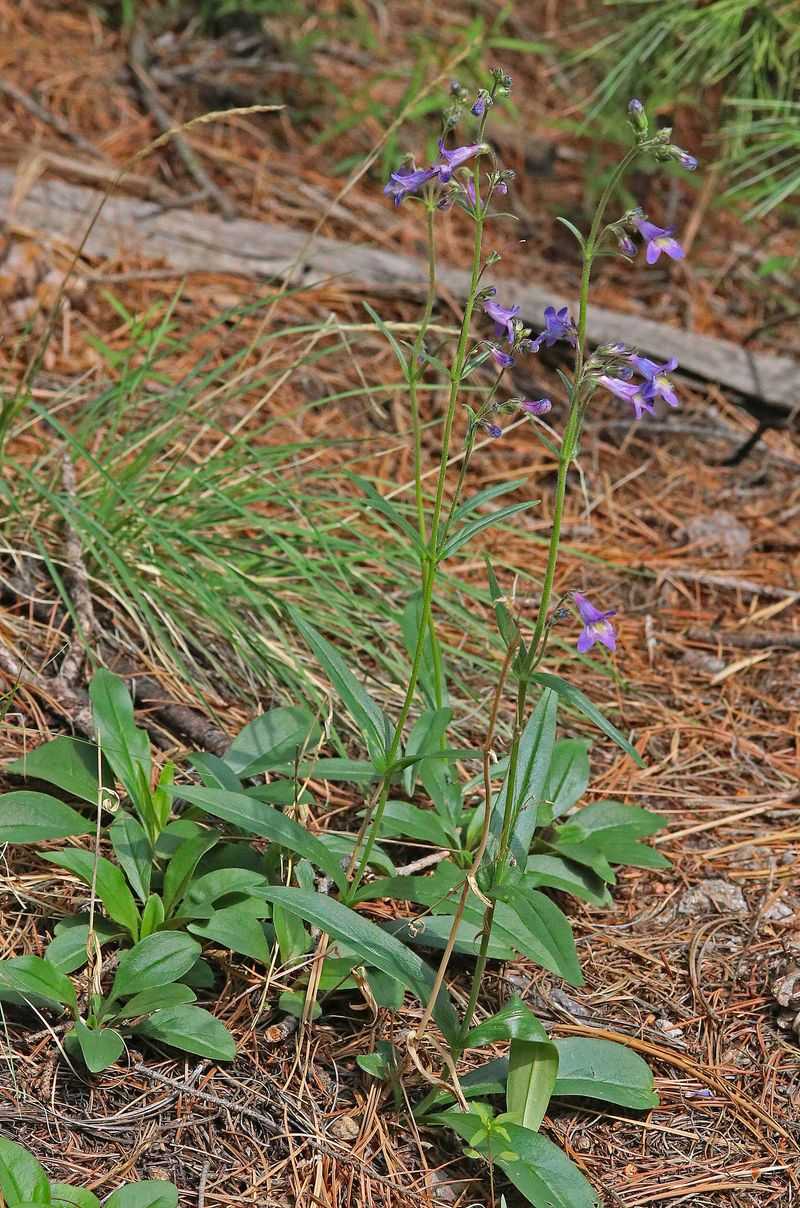New Mexico’s unique desert climate presents special challenges for gardeners, but the right native plants can transform your yard into a pollinator paradise while conserving precious water. Native species have evolved over thousands of years to flourish in our state’s harsh conditions.
I discovered the magic of native plants after years of struggling with thirsty, imported varieties that wilted under our intense sun. Not only do these indigenous beauties require less maintenance and water, but they create instant habitat for our local bees, butterflies, and hummingbirds that depend on them for survival.
Here are remarkable native plants that will bring New Mexico’s natural heritage to your garden while creating a buzzing, fluttering oasis of life. Each one offers something special – from dramatic blooms to distinctive foliage – while providing essential support for our declining pollinator populations.
1. Desert Marigold
Sunshine on stems is what you’ll get with these drought-tough perennials. Their cheerful yellow blooms appear after even the lightest rainfall, creating bright spots across the harshest landscapes.
Bees practically dive-bomb these flowers in my front yard. The pollen-rich centers offer protein-packed meals that keep native bees energized through hot afternoons.
Plant these 1-2 feet apart in full sun areas. They’ll bloom spring through fall, creating waves of gold that announce to passing butterflies: the buffet is open!
2. Chocolate Flower
Morning walks become magical when chocolate flowers are blooming. True to their name, these daisy-like yellow blossoms release a distinct cocoa scent in the early hours that’s absolutely intoxicating.
Honeybees start their day with these flowers, gathering nectar while the chocolate aroma is strongest. I’ve counted dozens of native bees visiting a single small patch in my garden.
Growing just 12-18 inches tall, they’re perfect for borders and rock gardens. The chocolate scent fades by afternoon, but pollinators continue visiting all day long.
3. Blue Grama Grass
New Mexico’s state grass might surprise you as a pollinator plant. The distinctive eyebrow-shaped seedheads dance in summer breezes, creating movement throughout garden beds.
Countless tiny native bees and beneficial insects use blue grama as shelter. The seeds feed birds during winter months, while the clumping habit provides year-round structure.
Extremely drought-tolerant once established, blue grama needs almost no supplemental water. I’ve seen this grass survive record-breaking heat waves while still maintaining its distinctive character and wildlife value.
4. Apache Plume
Feathery pink plumes follow small white rose-like flowers on this remarkable shrub, creating year-round interest. Native to arroyos and dry washes, Apache plume thrives in the challenging conditions that defeat less adapted plants.
Hummingbirds investigate the flowers while bees collect pollen. The fluffy seedheads, reminiscent of feather dusters, catch morning light in ways that transform ordinary gardens into enchanted spaces.
Growing to 5 feet tall, this architectural plant needs zero pruning or fussing. After summer thunderstorms in my neighborhood, the fresh plumes glow pink against the blue sky.
5. Scarlet Hedgenettle
Hummingbirds zoom straight to these bright red tubular flowers, sometimes squabbling over territory rights. The mint family member produces spikes of blooms that seem designed specifically for their long beaks.
Finding this beauty growing along a stream near Santa Fe changed my understanding of New Mexico’s native plants. Unlike many desert natives, scarlet hedgenettle appreciates regular moisture and partial shade.
Growing 2-3 feet tall, it creates brilliant color in mountain gardens and cooler microclimates. The square stems and aromatic foliage hint at its mint family connections.
6. Rocky Mountain Penstemon
Electric blue flowers stop traffic when Rocky Mountain penstemon blooms in late spring. The tubular flowers line sturdy stems, creating natural exclamation points throughout the garden.
Watching bumblebees disappear completely inside these flowers always makes me smile. Their fuzzy bodies emerge dusted with pollen as they move efficiently between blooms, demonstrating perfect pollinator partnerships.
Hardy and drought-tolerant once established, this penstemon performs beautifully at higher elevations. Throughout northern New Mexico, these natives create spectacular displays along roadsides and in mountain meadows.
7. Globemallow
Coral-orange cups appear by the dozens on these hardy perennials, bringing southwestern color to even the toughest spots. The silvery foliage handles heat and drought with remarkable resilience.
Native bees specialize in visiting these flowers, their bodies perfectly sized to collect pollen while ensuring pollination. My roadside plantings attract countless pollinators from spring through summer.
Growing 2-3 feet tall and equally wide, globemallow needs full sun and minimal water. The papery flowers close at night, reopening each morning to greet the sun and their pollinator partners.
8. Golden Crownbeard
Late-season gardens light up when golden crownbeard begins its autumn show. Hundreds of sunny yellow flowers create a butterfly magnet when many other plants have finished blooming.
Monarchs making their migration journey often stop to fuel up on these flowers. I’ve counted five different butterfly species feeding simultaneously on a single plant in my backyard border.
Growing 3-4 feet tall, this sturdy native handles poor soil with ease. The abundant blooms continue until frost, providing crucial late-season nectar when pollinators need it most.
9. Desert Willow
Orchid-like flowers in shades of lavender, pink and white transform this small tree into a hummingbird haven. Despite its name, desert willow isn’t a true willow but a drought-adapted flowering tree perfect for New Mexico landscapes.
Hummingbirds establish territories around these trees, chasing away rivals. My patio desert willow hosts fierce aerial battles all summer as the birds compete for the nectar-rich blooms.
Growing 15-25 feet tall, desert willow provides welcome shade while requiring minimal water. The seedpods provide winter interest and bird food after the spectacular flowering season ends.
10. Sunflower
Native sunflowers differ from their cultivated cousins, creating branching plants covered with dozens of smaller blooms. These wild versions excel at attracting native bees and butterflies to New Mexico gardens.
Goldfinches perform acrobatic feats to reach the ripening seeds, hanging upside down from the nodding heads. Leaving the spent flowers standing creates a natural bird feeder through fall and winter.
Growing 4-6 feet tall, these natives need no coddling or special care. Throughout the Rio Grande Valley, these cheerful flowers brighten roadsides and open spaces with their golden faces.
11. Butterfly Weed
Brilliant orange flower clusters create landing pads for monarchs and other butterflies. As a member of the milkweed family, butterfly weed serves as both nectar source and caterpillar host plant.
Finding monarch eggs on the undersides of leaves brings a special joy. I’ve raised the striking black, white and yellow caterpillars on plants in my garden, watching them transform into the next generation.
Growing 1-2 feet tall with a deep taproot, butterfly weed handles drought with ease. Once established in well-drained soil, this perennial returns reliably year after year.
12. Mexican Hat
Sombrero-shaped flowers nod in summer breezes, creating whimsical movement throughout the garden. The distinctive shape—with drooping red-and-yellow petals surrounding a tall central cone—gives this plant its common name.
Bees work their way around the prominent center cone, methodically gathering pollen. Even in August heat when many plants struggle, Mexican hat continues attracting pollinators to my garden beds.
Growing 2-3 feet tall on slender stems, these charming flowers need full sun and minimal water. Their unique form adds personality to wildflower meadows and natural-style gardens.
13. Chamisa (Rabbitbrush)
Golden clouds of tiny flowers transform this silvery shrub each fall. When most summer bloomers have faded, chamisa erupts with thousands of blossoms that become pollinator gathering spots.
Hundreds of native bees, butterflies, and beneficial wasps create a buzzing convention around mature plants. Walking past my garden’s chamisa in September requires careful navigation through the cloud of winged visitors.
Growing 3-5 feet tall and wide, this tough native handles poor soil and neglect. The aromatic foliage deters browsing deer while the fall flowers provide essential late-season pollinator support.
14. Hummingbird Trumpet
Coral-red tubular flowers dangle from arching stems, perfectly designed for hummingbird beaks. Found naturally in New Mexico’s mountains and canyons, this native perennial brings woodland magic to garden settings.
Rufous and broad-tailed hummingbirds battle for feeding rights around these flowers. My shaded patio planting has become a favorite refueling stop for migrating hummers heading south each fall.
Growing 2-3 feet tall in dappled shade, hummingbird trumpet appreciates regular moisture. The graceful stems and bright flowers create natural bouquets against evergreen backdrops.
15. Blue Flax
Sky-blue flowers dance on delicate stems each morning, creating ethereal beauty that belies this plant’s incredible toughness. Individual blooms last just one day, but plants produce new flowers daily for weeks.
Native bees visit early, when the pollen is fresh and abundant. By afternoon, the day’s blooms begin to fade, but tomorrow’s buds are already forming, ensuring continued pollinator support.
Growing 1-2 feet tall, blue flax reseeds gently without becoming invasive. Throughout northern New Mexico, these natives create blue drifts in meadows and along roadsides during late spring.
16. Evening Primrose
Lemon-yellow saucers open dramatically at dusk, unfurling in minutes to release sweet fragrance into the evening air. This twilight show attracts night-flying moths that serve as important pollinators.
Watching the flowers pop open feels like witnessing magic. My desert garden path is lined with these natives, creating an enchanted walkway that releases fragrance with each evening stroll.
Growing in a low rosette form, evening primrose handles poor, rocky soil with ease. The large blooms continue opening for weeks, with each flower lasting just one night before turning pink and fading.
17. Apache Beardtongue
Hot pink trumpets line tall stalks, creating vertical color that draws hummingbirds from surprising distances. Unlike many penstemons that bloom in blue or purple, this native sports electric pink that stands out dramatically.
Broad-tailed hummingbirds hover expertly while probing each flower. After installing several plants near my kitchen window, morning coffee now comes with aerial displays of iridescent birds working the flower spikes.
Growing 2-3 feet tall, Apache beardtongue thrives in New Mexico’s well-drained soils. The semi-evergreen foliage provides year-round structure while the summer blooms create weeks of pollinator activity.
18. Turpentine Bush
Aromatic foliage releases a distinctive resinous scent when brushed, while autumn brings clusters of golden button-like flowers. This woody perennial creates structure and pollinator support in challenging locations.
Late-season butterflies flock to these blooms when many other nectar sources have disappeared. Along my driveway, these tough natives fuel migrating monarchs and painted ladies preparing for their long journeys.
Growing 2-3 feet tall and wide, turpentine bush needs full sun and excellent drainage. The evergreen foliage maintains good looks through winter, while summer heat only intensifies its distinctive aromatic character.
19. Fleabane Daisy
Delicate pink or white daisy flowers appear by the hundreds on this charming native perennial. Despite its diminutive size, fleabane creates massive pollinator appeal through sheer bloom quantity.
Tiny native bees and flies specially adapted to small flowers visit in droves. My rock garden’s fleabane patch hosts more pollinator diversity than plants many times its size, proving that sometimes small flowers create big ecological impact.
Growing just 12-18 inches tall, these tough natives thrive in rocky soil and mountain gardens. Throughout New Mexico’s higher elevations, these cheerful daisies brighten meadows and roadside areas.



